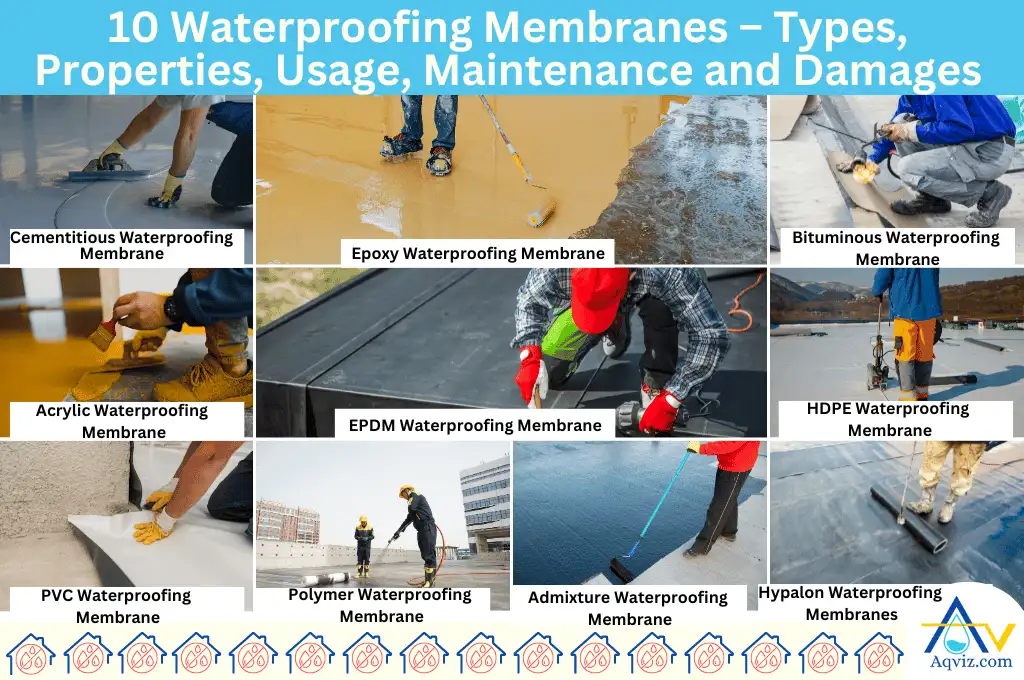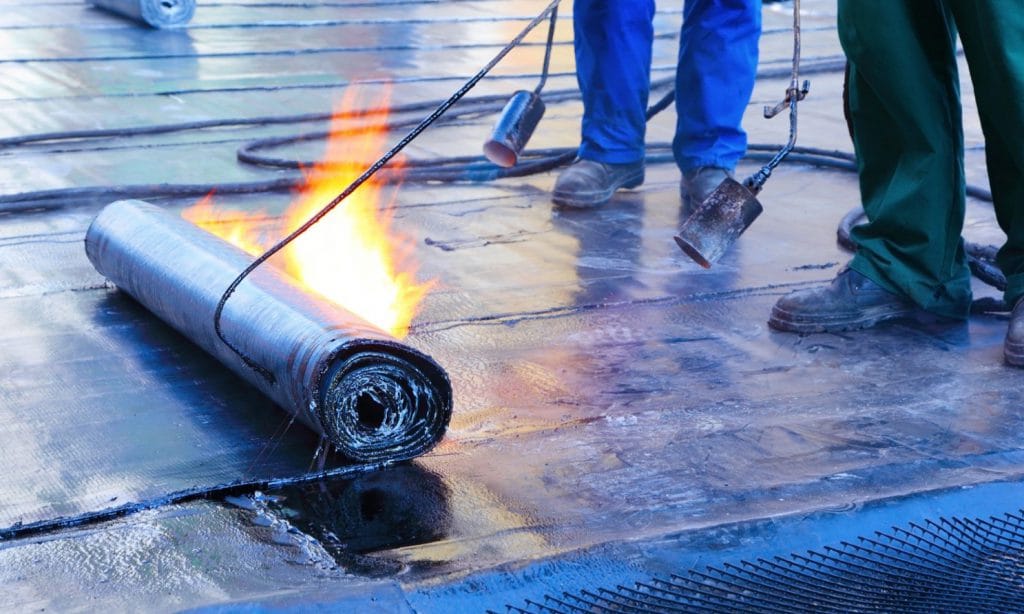Foundation waterproofing Omaha: How Often Should It Be Done?
Wiki Article
Sorts of Waterproofing: Exploring the Various Methods and Their Applications
Waterproofing is an important aspect of construction and upkeep. It protects frameworks from the harmful impacts of water damage. There are a number of approaches available, each with its special applications and benefits. From membrane systems to cementitious solutions, comprehending these alternatives is necessary for effective application. The choice of waterproofing method can significantly influence sturdiness and durability. Checking out these different techniques exposes their unique advantages and prospective difficulties, motivating further consideration of ideal services.Membrane Layer Waterproofing Systems
Membrane layer waterproofing systems offer as an essential barrier versus water breach in different frameworks. These systems commonly contain thin sheets made from materials like rubber, thermoplastic, or asphalt, which are put on surfaces to stop wetness penetration. They can be set up above or listed below quality and are specifically effective in areas vulnerable to high water exposure, such as cellars, roof coverings, and foundations.The setup process entails cleaning up the substrate, applying adhesives or guides, and precisely fitting the membrane layer to guarantee full insurance coverage. Membrane systems can be either totally adhered, mechanically affixed, or laid loose, depending upon the certain demands of the task. They provide durability and versatility, accommodating architectural movements without jeopardizing their waterproofing capacities. Additionally, these systems can be enhanced with additional layers for improved protection. Eventually, membrane layer waterproofing systems are vital for safeguarding structures versus water damage and maintaining lasting honesty.Liquid-Applied Waterproofing Coatings
Liquid-applied waterproofing layers give a flexible option for safeguarding surface areas from water seepage - Basement waterproofing Omaha. These coverings contain liquid products that, when applied, create a seamless, adaptable membrane. Their flexibility permits for application on different substratums, including concrete, steel, and wood. The layers can be utilized in varied environments, from residential to commercial setups, making them appropriate for roof coverings, foundations, and below-grade structures.One significant benefit of liquid-applied coatings is their capacity to adapt irregular shapes and pass through splits, producing a durable barrier against wetness. They usually exhibit exceptional adhesion buildings and resistance to UV radiation, ensuring long life and longevity. Furthermore, the application procedure is generally uncomplicated, permitting fast installation and decreased labor costs. This approach additionally minimizes the danger of water pooling, as the continuous layer properly routes water away from susceptible locations. On the whole, liquid-applied waterproofing layers are an efficient option for detailed water protectionCementitious Waterproofing Solutions

Cementitious waterproofing solutions supply a robust alternative for frameworks requiring reliable wetness protection. These systems mainly utilize a mix of cement, sand, and chemical ingredients to create a water-proof barrier. They are commonly put on surfaces such as concrete wall surfaces, foundations, and floorings, giving a resilient, durable defense versus water intrusion.One of the crucial benefits of cementitious waterproofing is its ease of application; it can be applied making use of a brush, roller, or spray, making it suitable for numerous job dimensions. Additionally, this method is compatible with many surface areas and can often be used together with various other waterproofing techniques.Cementitious remedies are especially efficient in atmospheres where water direct exposure is his explanation a concern, such as basements or below-grade frameworks. Their superb bond buildings assure that they bond well with substrates, offering a solid and impermeable layer against wetness infiltration.
Bentonite Waterproofing
Bentonite waterproofing is an extremely effective approach that uses salt bentonite clay to produce an all-natural obstacle versus water. This method makes use of the distinct residential or commercial properties of bentonite, which broadens upon call with water, securing any kind of prospective leaks and protecting against wetness infiltration. It is generally used in various applications, including foundation walls, tunnels, and retaining walls, where water resistance is essential.Bentonite can be applied in several forms, such as panels or blankets, providing versatility in installment. Its capacity to self-seal makes it an appealing choice for areas subject to shifting soil or changing water degrees. In addition, bentonite waterproofing is eco-friendly, as it is an all-natural product that does not introduce damaging chemicals right into check it out the environments.Water Drainage and Outside Waterproofing Systems
Effective waterproofing often entails a combination of approaches, consisting of drainage and exterior systems. Drainage systems, such as French drains and sump pumps, are made to reroute water away from structures, decreasing hydrostatic stress against foundations. These systems are necessary in preventing water build-up that can cause architectural damage and mold and mildew growth.External waterproofing, on the various other hand, includes applying safety obstacles to the building's exterior. Methods such as the setup of water-proof membrane layers, coatings, or sealants can assist prevent water seepage. This method not just protects the structure however additionally boosts the overall durability of the structure.Together, drainage and exterior waterproofing systems form an extensive solution to take care of water effectively. By carrying out these methods, property owners can safeguard their financial investments versus the damaging impacts of dampness, making certain long-term stability and security for their structures.Frequently Asked Inquiries
Just how Do I Pick the Right Waterproofing Approach for My Task?
Picking find more the appropriate waterproofing approach relies on aspects such as task kind, ecological conditions, budget plan, and desired long life. Evaluating these facets permits for educated choices tailored to particular needs and demands.
Can Waterproofing Be Applied in Cold Weather Condition Conditions?
Waterproofing can be used in cold climate conditions, yet it requires certain products and methods. Cold temperature levels might affect treating times and bond, necessitating mindful choice of products made for low-temperature application.
What Are the Typical Indicators of Waterproofing Failure?
Typical indicators of waterproofing failure consist of visible water discolorations, peeling off paint, damp smells, mold development, and cracks in wall surfaces or foundations. Sump pump discharge drainage Omaha. These indications recommend that dampness is permeating the barrier, compromising its effectivenessFor How Long Does Waterproofing Last Before Requiring Maintenance?
The long life of waterproofing varies, normally lasting in between 5 to ten years. Factors such as material top quality, environmental conditions, and maintenance techniques affect its longevity, demanding routine examinations to assure reliable defense versus water invasion.Are There Eco-Friendly Waterproofing Options Available?
The question of environmentally friendly waterproofing options discloses a growing interest in lasting products (Landscape drainage Omaha). Various all-natural compounds, such as plant-based sealants and recycled products, supply efficient services while minimizing ecological effect, attracting ecologically conscious customersReport this wiki page